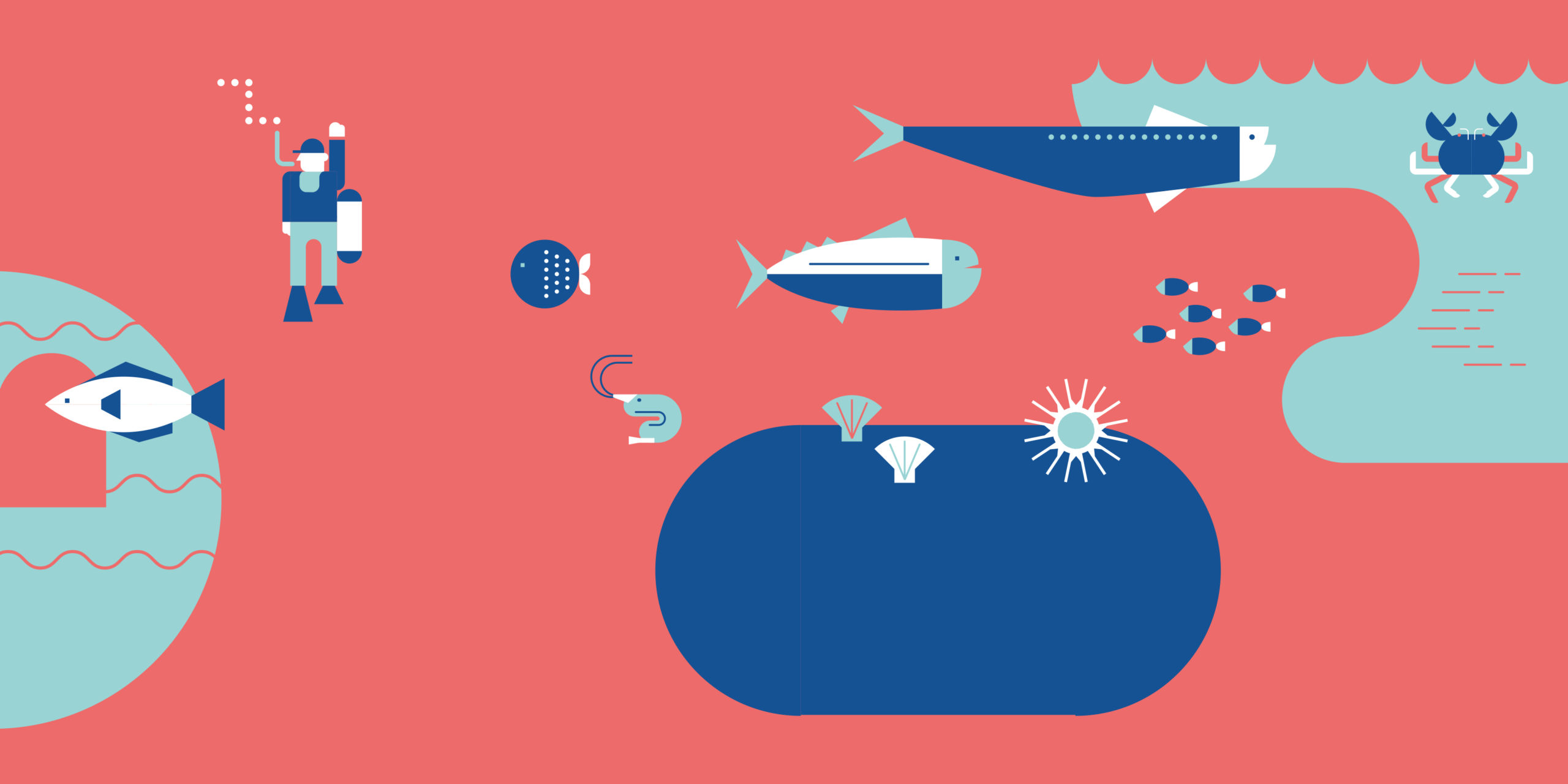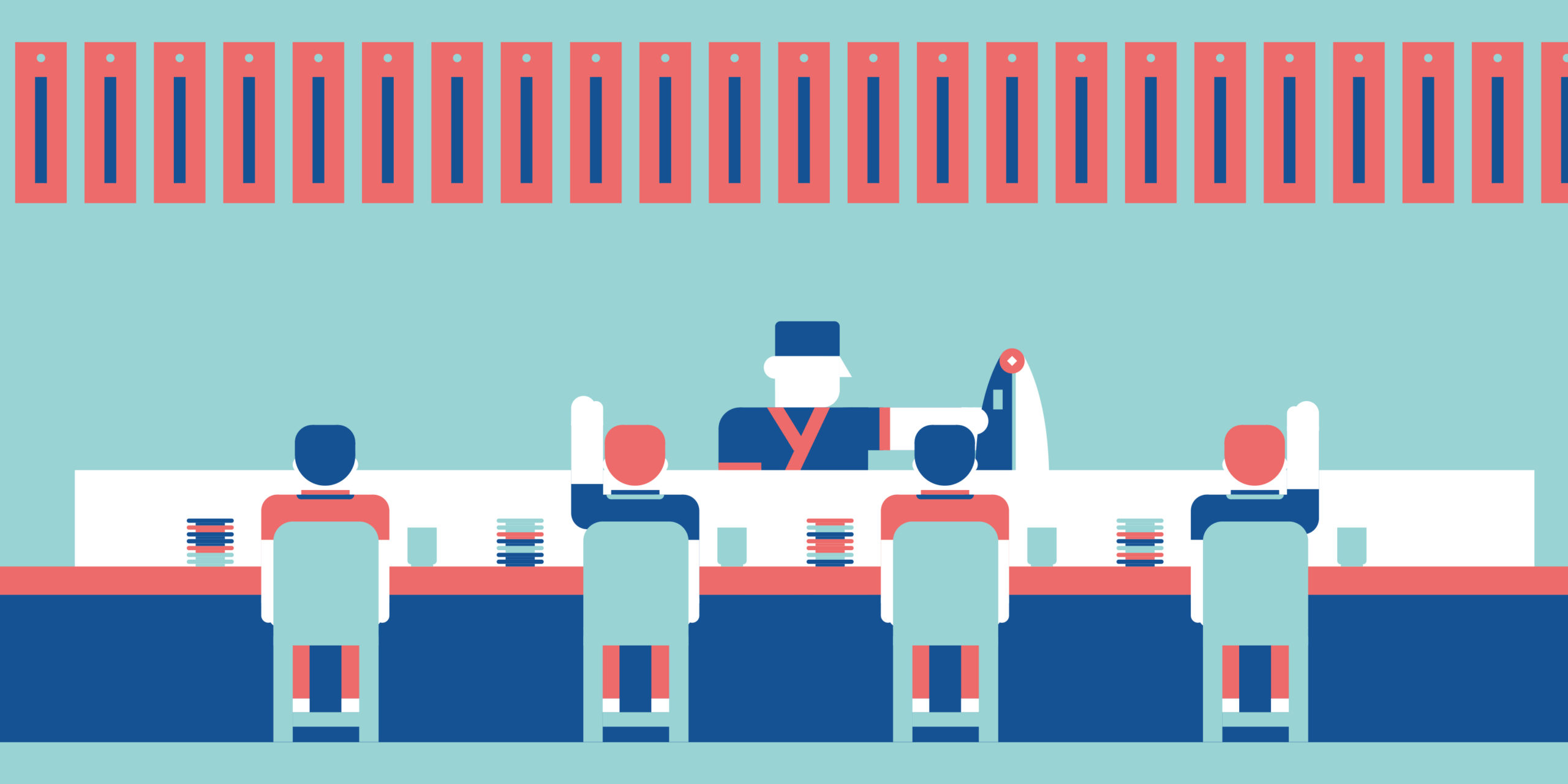Hong Kong people are gaining a global reputation as lovers of fresh seafood. We are now Asia’s second biggest consumers of seafood, and number eight in the world—each of us devouring an average of 65.5 kg every year, which is more than three times the global figure. We buy over 11,000 tonnes of salmon alone in 2017 and we take up 1% of Norway’s entire export sales. But it’s the growth in consumption of Japanese seafood that is most obvious. Every side street now seems to have at least one Japanese restaurant. And we are fussy eaters: we demand the freshest possible seafood. That’s why there’s a whole industry behind the fast–growing business of giving us exactly what we want… Of course, it all begins with the fishermen, who catch fish daily throughout Japan. The boats working closest to the main wholesale markets deliver direct to the quay, while fish caught further away is trucked to market, or even flown. Daily bidding for the fish starts an hour or two after arrival, at around 3am, and carries on for 2–3 hours. Broker Saeba Kenshin, of Ryukou Co. Ltd, is there every day, buying seafood for his customers in Hong Kong. Says Saeba: “The seafood comes from all over Japan, except the waters near Fukushima and Chiba. Hamachi, Shimaaji, Kanpachi and Tai come from Kumamoto and Nagasaki; Maguro from Nagasaki, Kagoshima or Okinawa; and Kinki, Kinmedai, Tai, Taichiuo, Buri, Hirame, Kue, Aji and Saba from Hokkaido, Kyushu, Shikoku and the Chūgoku region.” Packing starts at around 5am, and the fish is then trucked to Fukuoka Airport to catch flights to Hong Kong, usually arriving around 4pm. “Mostly we can deliver within 24 hours of catching, for seafood from the waters near Fukuoka.” But, he adds, adverse weather conditions can disrupt this tight schedule.
“The quality of my products is largely dependent on speed, and air cargo plays an important part. this task is time critical, and requires a lot of teamwork.”

In the kitchen within the hour
In Hong Kong, his customers send trucks to collect the seafood from Hactl’s Perishable Cargo Handling Centre (PCHC). Within an hour of arrival, the seafood will be in the restaurant kitchens, awaiting preparation for the table.
One of Kenshin’s best customers is Kenji Fujima, Managing Director of Fukusho Trading Limited, who says it’s the restaurant chefs who dictate what he should buy, according to their stocks and guest reservations. Kenji sends his orders through from Hong Kong at night, so Kenshin knows what to buy the next morning.
Availability varies according to season, and Kenji provides valuable feedback about what the market has to offer. Says Kenji: “For sushi restaurants, Tuna and Sea Urchin sell well. But for my French, Italian and European restaurants customers, they prefer white fish such as Sea Bream and Spanish Mackerel.”
Kenji goes on to explain that there are various categories of freshness of fish, so he asks chefs which grade they want: dead or live. Live fish is shipped in sea water, whereas Tuna is killed and cut into large “blocks” for bidding; it can then be kept for longer. Tuna are killed by the fisherman before arriving at market; and their meat tastes better if left for a few days, rather than being eaten within 24–48 hours.
Preparation and packing for shipping is quite involved: Kenshin, his buyer in Japan, removes all the blood to prevent colouring and freshness of the meat (he does this twice, adds Kenji proudly, while the majority of sellers only do it once). Then the fish is cooled by immersing it in –5°C sea water for 10–15 mins, so the centre of the meat is properly cooled. Then, the water is removed, and the fish is wrapped either in paper or plastic (according to its type). Finally, the fish is placed in styrofoam boxes with ice bags and ice pads.
Speed = quality
“The quality of my products is largely dependent on speed, and air cargo plays an important part. This task is time critical, and requires a lot of teamwork. I sell directly to restaurants, and I deliver to them. My drivers pick up from Hactl and deliver to restaurants in Central, Kowloon and other areas.”
Kenji’s business is now spreading from its traditional base of Japanese, French and other European restaurants to Chinese restaurants. It has seen 10-15% growth every year for the past 7 years.
Yuichi Higano, General Manager, Cargo & Mail, Hong Kong, of Japan Airlines Co., Ltd explains that their considerable seafood traffic comes via freight forwarders, appointed by the brokers in the fish markets, acting for the buyers in Hong Kong. “They pick up shipments at the fish markets, transport them to their own facilities and then to the airline warehouses. Many use the freight forwarding support centre operated by a Haneda Airport cargo warehouse operator, located under the same roof as the airline warehouse.”
He continues: “Fresh seafood is an important cargo for us as one of the major commodities for our Haneda (Tokyo) - Hong Kong flights, and also as an example of the express cargo being promoted by JALCARGO.”
He cites Tuna as an illustration: “They are auctioned at the newly-opened Toyosu Market at around 5am each morning, then catch the JL029 departing Haneda at 10am, arriving in Hong Kong at around 2pm. Considering the transportation time between shippers and consignees, we think that this is one of the fastest routes available.”

“We accept late shipments through our urgent transportation service, ‘J Speed’, whose cut-off time is just 90 minutes before flight departure.”
Late fish can still catch the plane
In most cases, JALCARGO receives shipments ready for carriage. “For more temperature-sensitive shipments, we offer our reefer containers so that they can enjoy even better temperature control. We accept late shipments through our urgent transportation service, “J Speed”, whose cut-off time is just 90 minutes before flight departure.”
“We have worked together with our customers to accommodate even seafood which is sold at a later auction time, such as Tuna or Sea Urchins. Also, we make every effort to accept as much cargo as possible from the Toyosu Market even though it is further from the airport than the former Tsukiji Market.”
Yuichi says the Hactl facility in Hong Kong assists his ability to handle this fresh seafood business, because its dedicated PCHC is close to the aircraft stands, and the special handling procedure permits quick delivery of the cargo. “The flexible operation enables consignee agents to receive shipments at their convenience, helped by providing aircraft arrival information using Hactl’s self-developed information technology.”
Korean Air takes a different route from Japan to Hong Kong, departing from Fukuoka and Osaka, and transiting Seoul before arriving in Hong Kong. Despite this, it can still offer 7 hour transit times for more urgent shipments. It also has a dedicated product for special handling commodities such as perishables, explains Regional General Manager, Cargo Office, Hong Kong & Macau, Tony Lee: “As a founder member of SkyTeam Cargo, Korean Air participated in co-developing a product portfolio comprising ‘Equation’, ‘Cohesion’, ‘Variation’ and ‘Dimension’. Fresh fish shipments fall within the scope of ‘Variation’, which is a highly-specialised service that adapts to the special needs of valuables, live animals, perishable goods, or any shipment requiring special handling. Korean Air provides fully-customized, dedicated air transport services according to the shipper’s special requests, backed by a tailor-made agreement.”
“Fresh fish shipments fall within the scope of ‘Variation’, which is a highly-specialised service that adapts to… any shipment requiring special handling.”
Active or passive
Korean Air offers passive or active shipping options, depending on the shipper’s requirements. And, with “Variation”, loading and unloading are prioritised.
Korean Air has seen a dramatic increase in e-commerce shipments, and that now includes fresh seafood sold direct to consumers. “Since the shelf life of fresh fish is rather short, to maintain market competitiveness, a flight schedule with shorter connection times is required.” adds Tony.
He also points to the challenges caused by weather disruption, and the shortage of refrigerated trucks among local forwarders, leading to some difficulties in maintaining product quality during the final mile sector.
Tony, too, speaks highly of Hactl’s specialised facilities for perishables handling, including its priority cargo breakdown, its temperature monitoring system and its real time reports on fresh food shipments covering the entire process from arrival to delivery.
But we mustn’t forget the chef who finally transforms this fresh seafood into delicious dishes for Hong Kong’s increasingly discriminating palate. So let’s meet Japanese chef Taichiro Motoyama, of Mikasaya in Hong Kong.
Taichiro has been working in Hong Kong for 13 years now. He says the most popular dishes today are sushi and sashimi, and the most requested seafood are Toro (Tuna) and Uni. Many customers choose to eat “Omakase” – where the patrons leave the choice of sushi to the chef, rather than ordering à la carte.

“Customers are becoming more demanding and more knowledgeable about Japanese cuisine, and nowadays insist on the very highest standards of freshness.”
More Japanese restaurants every year
Says Taichiro: “Customers’ tastes are always changing, and there is now a wide choice of cuisines.” But it’s also getting more competitive: “Every year there are more Japanese restaurants. We face strong competition and other challenges like rising rent and wages. But more people are coming to like Japanese food.”
Patrons vary as much as the food: weekday lunchtimes are a good mix of Japanese and Hong Kong people from nearby offices, while weekday dinner times are dominated by businessmen; at weekends, it’s mostly younger customers and families.
“Customers are becoming more demanding and more knowledgeable about Japanese cuisine, and nowadays insist on the very highest standards of freshness,” continues Taichiro – who uses a number of importers in order to ensure he always has access to all types of seafood, and can accommodate any special advance orders.
Japanese seafood preparation is, of course, very theatrical. Concludes Taichiro: “The Chef’s character is very important: customers enjoy interacting with me, and I enjoy talking to them, too. I love my job very much!”


“Fresh seafood receives priority loading into and unloading from aircraft, with dedicated tractor drivers towing it to and from perishable cargo handling centre, located right next to the cargo apron.”
Hactl’s fishy fast-track
For Hactl, perishables traffic accounts for around 6% of total tonnage. Over half of that is seafood; and a quarter of all the seafood comes from Japan.
With freshness key to the quality and value of the seafood, it’s little wonder Hactl devotes so much resource to the job of handling it as quickly as possible. Fresh seafood receives priority loading into and unloading from aircraft, with dedicated tractor drivers towing it to and from Perishable Cargo Handling Centre, located right next to the cargo apron. This has its own direct access to Hactl’s giant cargo handling system, to ensure the fastest possible transfer into a dedicated zone.

